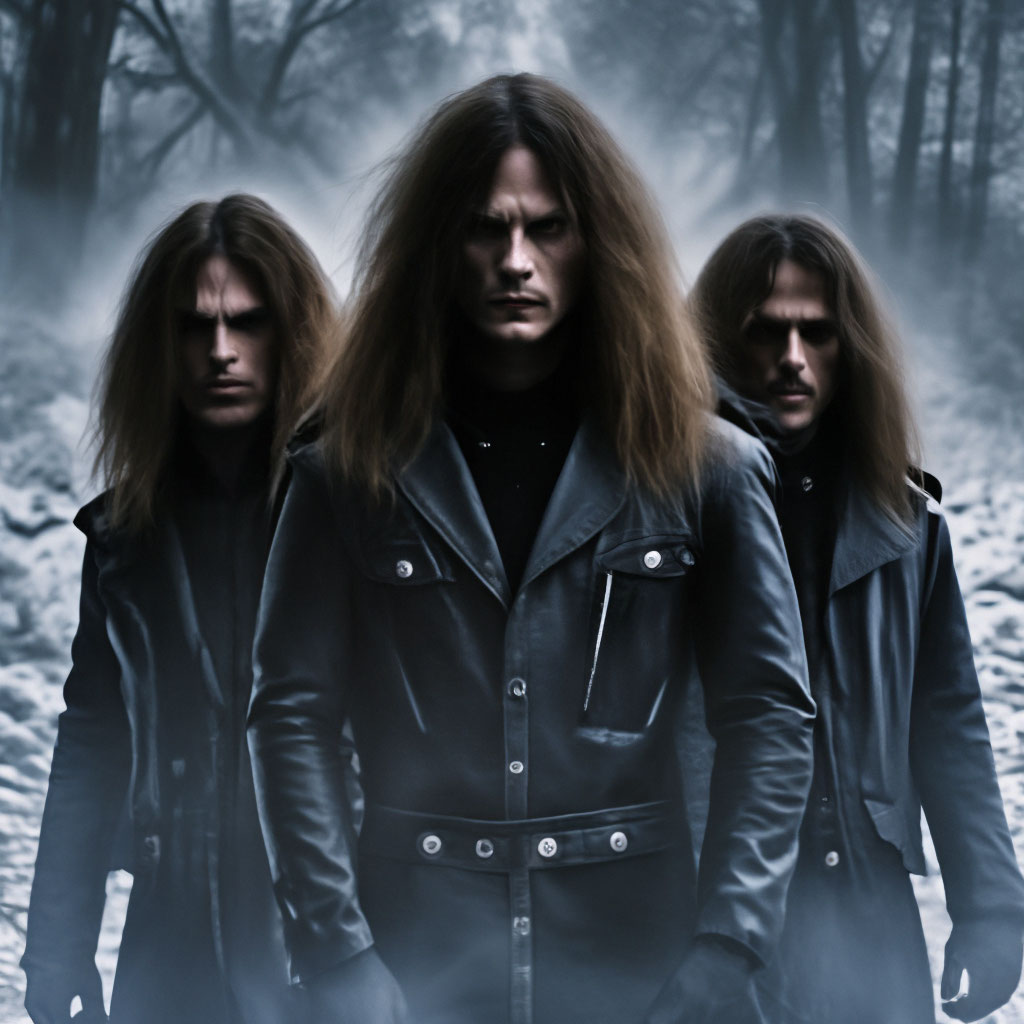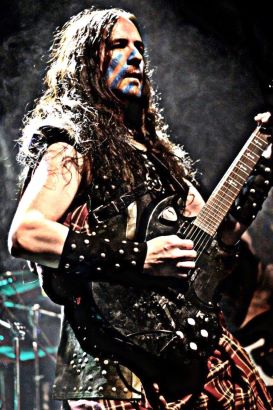
Heavy Metal music has been destroying eardrums since the late 1960s and now comes in almost any permutation you can think of, including Celtic Metal.
Although the genre’s genesis goes back only as far as the mid-to-late 1980s, its popularity continues to evolve, especially amongst elder millennials.
Dean Crookes is one such millennial. At 35, he remembers when Celtic Metal was a new musical concept.
“My parents were into it, kind of,” says Cookes, in a Zoom chat with Celtic Life International from his home in Nottingham. “They were more into soul music, but also a little bit of metal. Stuff like Iron Maiden, Black Sabbath, Guns N’ Roses. I was always more into European Metal, as I started to come into my own tastes.”
Crookes belongs to the Celtic re-constructionist faith, an offshoot of Celtic Paganism. Between that and his general interest in Celtic history and folklore, he began exploring Celtic Metal in his young adulthood, and was surprised to find…not a whole lot of it.
“I was looking for something because back then, in early 2010, everyone was into Viking Metal, and I thought, why is there nothing Celtic? That doesn’t make sense. But then I looked it up, and it was just starting to become a thing. Folk Metal was very niche until recently – you would have a few outliers who kind of started it like Waylander (Northern Ireland), but it really didn’t come into its own until about around the late 2000s and early 2010s.”
Keith Fay also remembers the origins of Celtic Metal in the early 1990s – that’s because he was right there at the epicentre. Fay is the founder and frontman of the Irish Celtic Metal band Cruachan, considered to be one of the progenitors of the style.
“As a young lad, I was into Heavy Metal because my older brother got into metal,” he recounts via Zoom from his home in rustic Westmeath, Ireland. “I’m in my late 40s now, but I was around 12 years of age when my brother John was listening to Slayer and Metallica, and that’s what I got into.
“I was very much into Tolkien’s The Lord of the Rings and Irish history, Celtic mythology. So, I started my own band called Minas Tirith. Eventually that became Cruachan, as I lost interest in the Lord of the Rings, and I wanted to focus more on Irish history and mythology. Plus, in the early 1990s, nobody was really doing that kind of crossover fusion that is so popular now.”
Fay was hardly out of primary school when he started thrashing.

“I started playing in death metal bands at the age of 12, believe it or not, with a few older guys. I was doing that kind of screaming vocal, and that was before it even became popular in the black metal scene. When we started bringing in tin whistles and things like that, I was 13 or 14 years old. I wrote our first album – Tuatha na Gael – when I was 14. Today, it is considered a cult album, and lots of people still love it. You could make the argument that we created a genre.”
Many lambasted the idea at the time, however.
“When we started, a lot of people laughed at us, thinking we were ridiculous. That kind of fusion was almost unthinkable back then…”
Fay notes that as alternate folk metal genres gained steam in Europe – mainly the Scandinavian countries – it opened the door for Celtic Metal to find new listeners. But back home in Ireland and other Celtic nations, where metal wasn’t as popular, growing the genre was challenging due to lack of exposure.
“All across Europe in the early 90s, there were these huge folk music revivals,” says Fay. “That never happened in Ireland because folk music never faded away. It never died away to need a revival. It’s just omnipresent. It’s what your dad is listening to. It’s on the radio advertising everything from ice cream to cheese. There was nothing cool about it.”
Even in mainland Europe, the problem persists. Laurène TelennAria hails from Bretagne where she grew up with a love for the harp that she now harnesses to rock as part of the Celtic Metal band Orkhys.
“We are a very young band – we have only three years of experience,” shares TelennAria, who also acts as the group’s vocalist. “For a band in France, where metal music is not well known or played on the radio very often, it is quite challenging. It’s not like in the Scandinavian countries, where you can turn on the radio and listen to metal or see some metal bands on the streets or on stage.”
Making things even more difficult is a certain – as Fay puts it – “wishy-washiness” of the folk metal scene. In fact, it can be hard to even agree on what exactly Celtic Metal is.
“The lines are just so blurred between the genres,” he acknowledges. “Celtic Punk is a far more defined genre than Celtic Metal.”
“Celtic Metal, in my opinion, has to have a folk sound to it,” says Crookes, who runs a Celtic Metal YouTube channel, The House of Wyvern. “It has to make it distinguishable from any other genre, otherwise it’s just metal with lyrics. Some of the metal heads would probably argue with me about that, but I would say that’s probably the best way to define it.”
TelennAria agrees.
“When you mix the sonic patterns that are used in Celtic folk music with noisy guitars, big drums, and deep, dark lyrics you can create magic…”
Fay adds that what matters – first and foremost – is making the metal memorably Celtic.
“What makes Celtic Metal unique is the influence of trad stuff. In Cruachan’s case, we have an absolute maestro fiddle player – Audrey is s a music teacher and she is just incredible. I can’t believe how lucky we are to have a musician like her. So many folk metal bands across Europe and across the world have bagpipes, or different versions of war pipes. For example, Spanish Galician bagpipes; they are beautiful, an amazing instrument, and very, very harsh – I love them.”
Over time, Celtic Metal has developed a loyal, albeit scattered, following.
“We have had families fly over from the US to see Cruachan in their hometown, with half the crowd wearing kilts,” says Fay, who is hoping his band will be selected to perform for the 2024 Eurovision competition: on a global stage as popular as Eurovision, Cruachan could help turn Celtic Metal into a worldwide sensation, and finally liberate it from the niche.
He admits that the band has submitted entries before and has never been chosen. “But if we do, it could be a turning point in Celtic Metal. Who knows?”
In the meantime, the best thing one can do to help ensure Celtic Metal rings in more ears around the world is to support the bands they know and like and explore other bands they may have never heard of.
“I just want there to be more of it, really,” says Crookes, who himself is starting to learn the bagpipes. “I go to metal bars and tell people what they’re about and stuff, to try and keep the community alive.”
“We have to share the music, and spread the culture,” adds TelennAria. “Social media is great for that. I believe that each one of us can help grow metal music by getting out to concerts and supporting the scene. Be supportive and be curious.”




















Leave a Comment